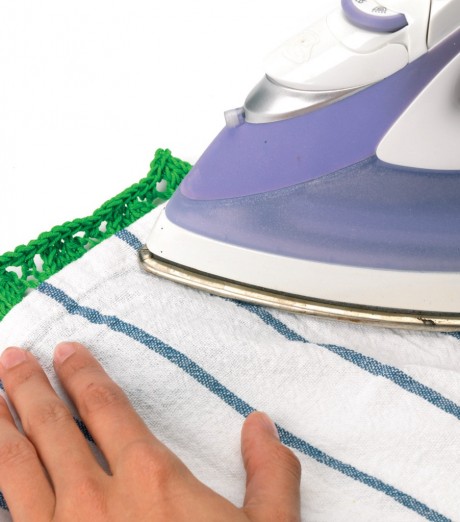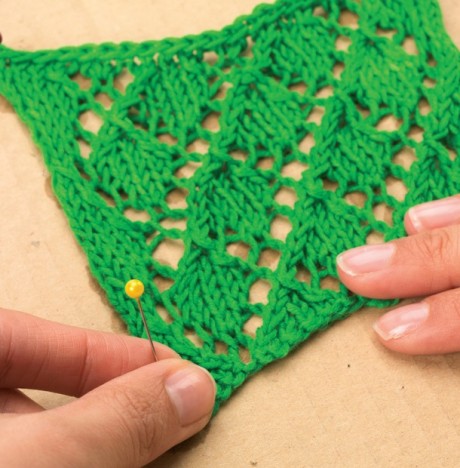So you’ve finished knitting all the pieces for your garment, and you can’t wait to sew it up and wear it. But stop! Before you start, it will usually need blocking. If you’re not sure how best to go about this, don’t panic – we’ve got three options so that you can choose which method will suit your knit best.
Blocking relaxes the stitches in your knitting and makes them more uniform, something that is especially important with lace patterns. It can be used to ensure your garment pieces are the correct size and the blocking process allows your work to be stretched to the correct measurements if accidentally came out a little short.
The lace swatch above has come straight off the needles, and as you can see, the stitch pattern looks very uneven. Luckily, this will be sorted by blocking! There are three different ways to complete the first stage of blocking your knits, and it is up to you which you use, but some will be more suited to your project than others.
Wet blocking
Best for sturdy or chunky knits, this method involves submerging your knitting in water. Make sure it is wet rather than just damp, but not completely sodden, and be sure to look at the instructions on the ball band of your yarn to check the water is not too hot. Drain or tip away the water and gently squeeze out any excess moisture. But remember – never lift a water-logged garment as the weight could pull it out of shape.

Steam blocking
For slightly more delicate options, try using steam. Start by wetting a cloth or tea towel and placing it over your knitting. Using an iron and a heat setting suitable for your yarn, move the iron over the cloth until it is dry. Never let the iron touch the knitting, and be sure not to use this method for heavily textured patterns, such as cables.

Spray blocking
For the most delicate fibres and projects, particularly very fine lacework, it is best to spray the knitting with water, rather than submerging it completely or using an iron. Just spray the fabric with a spritzing bottle until it is wet through.

The next step:
While still damp, pin your work out to the correct measurements or until your stitch pattern looks nice and even. Foam mats are an ideal choice for a base but corrugated cardboard works too. If blocking a cardigan, make sure you pin the two front pieces to exactly the same size. Similarly the front and backs of a garment should be the same length too. Don’t worry if your work dries out a little bit when you’re trying to pin it, just spray it with water to keep the stitches relaxed. Now leave to dry naturally. For larger garments this could take up to a couple of days but trust us - it’s worth it.

And finally…
When your piece is dry, remove the pins. See how our example has got bigger and the eyelet stitch pattern has evened out. You are now ready to sew up your garment or show off your finished project.

Ta da!






_333_180_c1.png)
_333_180_c1.png)

_333_180_c1.png)
 Baby
Baby
 Toys
Toys
 Garments
Garments
 Crochet
Crochet
 Homewares
Homewares
 Dolls
Dolls



Share